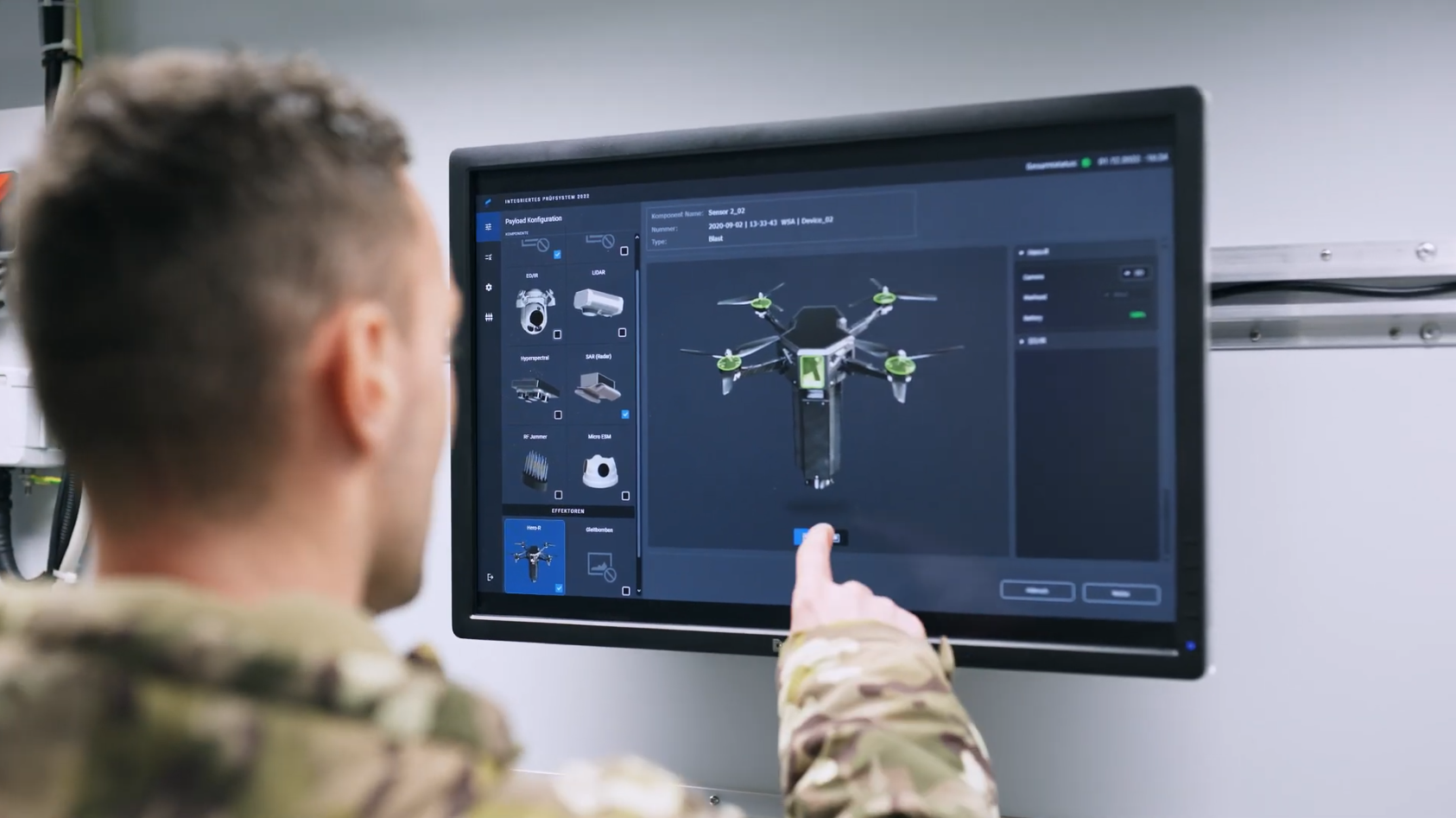In 2021, Rheinmetall re-entered the drone business. Already in the noughties, the Düsseldorf-based defence company had been researching “loitering munitions” with an Israeli partner.
Rheinmetall wants to equip its “Luna” drones with intelligent munitions. The fixed-wing aircraft, which is about three metres long and has a wingspan of five metres, is to carry grenades for this purpose. The Düsseldorf-based defence company made details known on Wednesday in a video on Youtube. The grenades are mounted on quadrocopters with four propellers and can fly independently to the target. Rheinmetall is developing the rotorcraft munition together with the Israeli company Uvision. There it belongs to the “Hero-R” product family, which Uvision markets as “loitering munition”.
The importance of “loitering munitions” on the battlefield is increasing rapidly, especially in Ukraine. In the field of unmanned aerial vehicles, the Kiev defenders are currently ahead, with quadro- or multicopters being procured en masse for reconnaissance, but also for kamikaze attacks with small warheads. Pilots fly the small aircraft to the target with the help of video goggles, and when they detonate, the carrier system is also destroyed. If the armed rotorcraft are flying in conjunction with a manned or unmanned reconnaissance system, they are referred to as a “sensor-to-shooter kit”.
The drone bomber from Rheinmetall and Uvision can reportedly carry up to eight self-flying grenades. Rheinmetall calls the technology a “gamechanger for protecting own troops and engaging tactically relevant targets”. It is intended for the army, which is why the range of the “Hero 1” is supposed to be similar to self-propelled guns. With regard to the delivery system, however, much greater distances would be possible: controlled by radio, the “Luna” can fly up to 100 kilometres, according to the manufacturer.
The rotary-wing grenades are to be launched at a speed of 70 kilometres per hour, and their loiter time over enemy territory is said to be up to ten minutes. The flying warheads are, however, rather small compared to the other models of the “Hero” family and are to be used in close combat, for example, for attacks on trenches or individual squads of soldiers. According to media reports, armour-piercing warheads can also be used.
Rheinmetall and Uvision already announced the equipment of the “Luna” with small, armed drones in December; a year earlier, the two defence companies had started a corresponding cooperation. The further development of the “Luna” became an obvious option after its former manufacturer EMT from Penzberg in Bavaria filed for insolvency in 2021.
Rheinmetall bought the medium-sized engineering company for €32 million and thus re-entered the military drone business after a long break. From 2010, the group had operated the Israeli drones “Heron 1” for the German Armed Forces in Afghanistan, this contract was taken over after a few years by the then founded Daimler AG and later Airbus.
Rheinmetall was already researching “loitering munitions” for the German army in the noughties, but this did not result in a product ready for series production. The envisaged “Effective Means for Stand-Off Engagement of Single and Point Targets” (WABEP) was also to consist of two different flying drones, which were, however, to travel separately from each other: The unmanned “Small Aircraft Target Locator” operated by the army was to take over military reconnaissance and mark targets, which were then to be destroyed by drones from the Israeli company IAI.
The Ministry of Defence wanted to procure two systems with 42 kamikaze drones each, but decided against it in the end. The reason given was that the WABEP would have taken seven years to develop and would have been “technically obsolete” by the time it could be introduced in 2019. A year after this date, Azerbaijan attacked Armenia’s Arzakh, which is considered the first interstate war in which armed drones – including “loitering munitions” from Rheinmetall’s then partner IAI – played a key role.
Published in German in „nd“.
Image: Rheinmetall (YouTube).





Leave a Reply